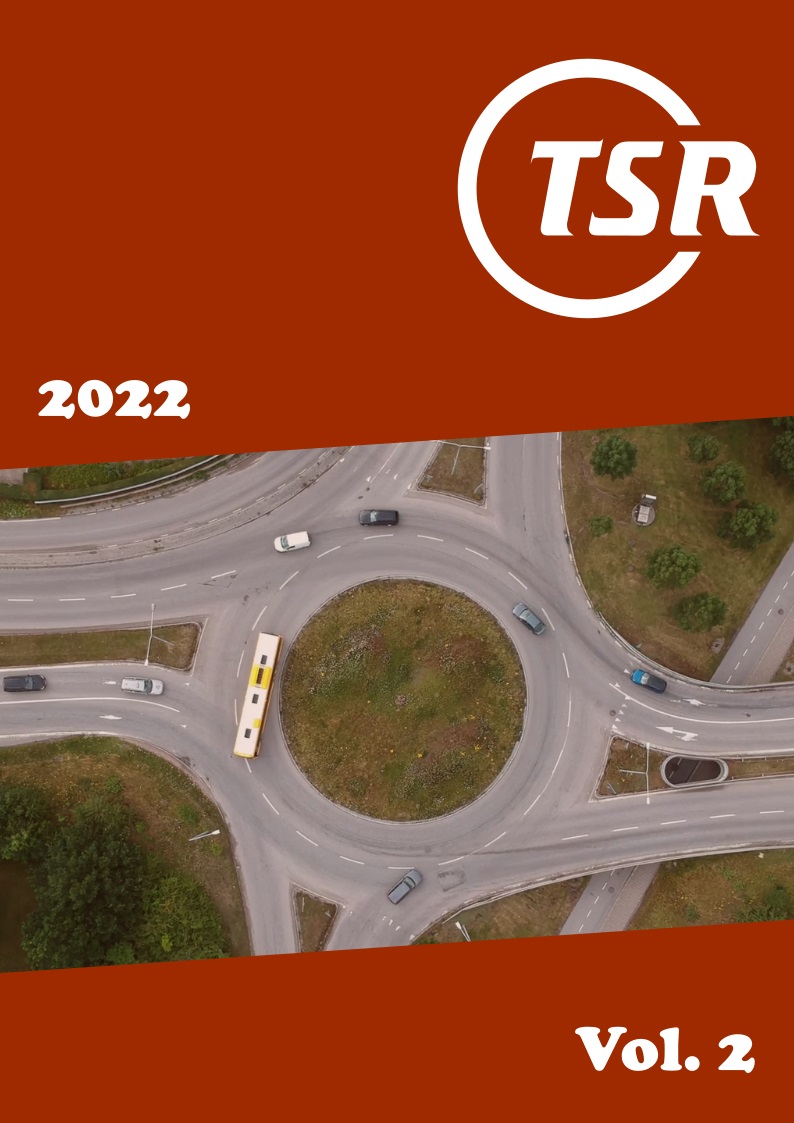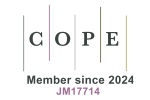Do we know why the number of traffic fatalities is declining? If not, can we find out?
DOI:
https://doi.org/10.55329/oyhu8693Keywords:
causality, decline, historical reconstruction, statistical analysis, traffic fatalitiesAbstract
The number of traffic fatalities has declined by 80-90% from the all-time peak number in many highly motorized countries. It would be of great interest to identify factors that explain this decline. Unfortunately, this is difficult, and an ideal method does not exist. This paper discusses some less-than-ideal methods. Multivariate statistical analyses are unlikely to be informative because they are likely to be affected by both multicollinearity and omitted variable bias. This implies that they will always include both too many and too few predictor variables, a problem that is impossible to solve. Historical reconstruction is another possible method. It explains fatality reductions over time by known factors that are related to fatalities and for which sufficient information about their presence or uptake is available. Studies based on historical reconstructions show consistently that safer road user behavior is a major contributor to reducing fatalities, followed by infrastructure and vehicle related safety measures. However, there is no way of establishing causality. The relative importance of different types of factors is highly dependent on the amount of information available. In a strict sense, there is therefore no prospect of providing a scientific explanation of the decline in traffic fatalities. In a less strict sense, historical reconstructions still may give an impression of relative contributions of some known factors. For example, the most recent Norwegian study identified factors that may explain more than half of the reduction of road traffic fatalities after 2000.
Downloads
References
Antoniou, C., G. Yannis, E. Papadimitriou, S. Lassarre (2016) Relating traffic fatalities to GDP in Europe on the long term. Accident Analysis & Prevention 92, 89-96: https://dx.doi.org/10.1016/j.aap.2016.03.025
Broughton, J., R. E. Allsop, D. A. Lynam, C. M. McMahon (2000) The numerical context for setting national casualty reduction targets. Transport Research Laboratory. TRL report 382
Elvik, R. (2011) Assessing causality in multivariate accident models. Accident Analysis & Prevention 43 (1), 253-264: https://doi.org/10.1016/j.aap.2010.08.018
Elvik, R. (2021) Legislation, Enforcement and Education for Traffic Safety: A Brief Review of the Current State of Knowledge in Tiwari, G., D. Mohan (Eds.) Transport and Safety: Systems, Approaches, and Implementation. Springer Singapore. ISBN 978-981-16-1115-5: https://doi.org/10.1007/978-981-16-1115-5_4
Elvik, R., A. K. Høye (2021) Hva forklarer nedgangen i antall drepte eller hardt skadde i trafikken etter 2000? Transportøkonomisk institutt. Rapport 1816/2021: https://www.toi.no/getfile.php?mmfileid=55883
Elvik, R., M. Kolbenstvedt, B. Elvebakk, A. Hervik, L. Bræin (2009) Costs and benefits to Sweden of Swedish road safety research. Accident Analysis & Prevention 41 (3), 387-392: https://doi.org/10.1016/j.aap.2008.12.009
Elvik, R., R. Muskaug, T. Vaaje (1984) Virkninger av alternative strategier for å øke trafikksikkerheten i Norge. Transportøkonomisk institutt. Rapport
Evans, L. (1990) An attempt to categorize the main determinants of traffic safety. Health Education Research 5 (2), 111-124: https://doi.org/10.1093/her/5.2.111
Fridstrøm, L. (2015) Disaggregate accident frequency and risk modelling. A rough guide. Institute of Transport Economics. Report 1403/2015: https://www.toi.no/getfile.php?mmfileid=40414
Fridstrøm, L., S. Ingebrigtsen (1991) An aggregate accident model based on pooled, regional time-series data. Accident Analysis & Prevention 23 (5), 363-378: https://doi.org/10.1016/0001-4575(91)90057-c
Furuhaugen, H., R. E. G. Jamt, G. Nilsson, V. Vindenes, H. Gjerde (2018) Roadside survey of alcohol and drug use among Norwegian drivers in 2016–2017: A follow-up of the 2008–2009 survey. Traffic Injury Prevention 19 (6), 555-562: https://doi.org/10.1080/15389588.2018.1478087
Førland, T. E. (2013) Årsaksproblemer i historisk forskning. Tidsskrift for samfunnsforskning 54 (3), 355-370: https://doi.org/10.18261/issn1504-291x-2013-03-05
Gjerde, H., A. S. Christophersen, P. T. Normann, J. Mørland (2013) Associations between substance use among car and van drivers in Norway and fatal injury in road traffic accidents: A case-control study. Transportation Research Part F: Traffic Psychology and Behaviour 17, 134-144: https://doi.org/10.1016/j.trf.2012.11.004
Gjerde, H., P. T. Normann, B. S. Pettersen, T. Assum, M. Aldrin, U. Johansen, L. Kristoffersen, E. L. Øiestad, A. S. Christophersen, J. Mørland (2008) Prevalence of alcohol and drugs among Norwegian motor vehicle drivers: A roadside survey. Accident Analysis & Prevention 40 (5), 1765-1772: https://doi.org/10.1016/j.aap.2008.06.015
Hauer, E. (2010) Cause, effect and regression in road safety: A case study. Accident Analysis & Prevention 42 (4), 1128-1135: https://doi.org/10.1016/j.aap.2009.12.027
Hempel, C. G. (1965) Aspects of scientific explanation and other essays in the philosophy of science. The Free Press
Høye, A., T. Bjørnskau, R. Elvik (2014) Hva forklarer nedgangen i drepte og hardt skadde i trafikken fra 2000 til 2012? Transportøkonomisk institutt. Rapport 1299/2014: https://www.toi.no/getfile.php?mmfileid=35359
Lassarre, S. (2001) Analysis of progress in road safety in ten European countries. Accident Analysis & Prevention 33 (6), 743-751: https://doi.org/10.1016/s0001-4575(00)00088-9
Macintyre, A. (1976) Causality and history in Manninen, J., R. Tuomela (Eds.) Essays on Explanation and Understanding. Synthese Library. ISBN 90-277-0592-5: https://doi.org/10.1007/978-94-010-1823-4_8
Mannering, F. L., C. R. Bhat (2014) Analytic methods in accident research: Methodological frontier and future directions. Analytic Methods in Accident Research 1, 1-22: https://doi.org/10.1016/j.amar.2013.09.001
Page, Y. (2001) A statistical model to compare road mortality in OECD countries. Accident Analysis & Prevention 33 (3), 371-385: https://doi.org/10.1016/s0001-4575(00)00051-8
Partyka, S. C. (1984) Simple models of fatality trends using employment and population data. Accident Analysis & Prevention 16 (3), 211-222: https://doi.org/10.1016/0001-4575(84)90015-0
Partyka, S. C. (1991) Simple models of fatality trends revisited seven years later. Accident Analysis & Prevention 23 (5), 423-430: https://doi.org/10.1016/0001-4575(91)90061-9
Weijermars, W., I. van Schagen (2009) Tien jaar duurzaam veilig: Verkeersveiligheidsbalans 1998-2007. SWOV Institute for Road Safety Research. R-2209-14: https://swov.nl/nl/publicatie/tien-jaar-duurzaam-veilig
Downloads
Published
How to Cite
Issue
Section
License
Copyright (c) 2022 Rune Elvik, Alena Katharina Høye

This work is licensed under a Creative Commons Attribution 4.0 International License.









